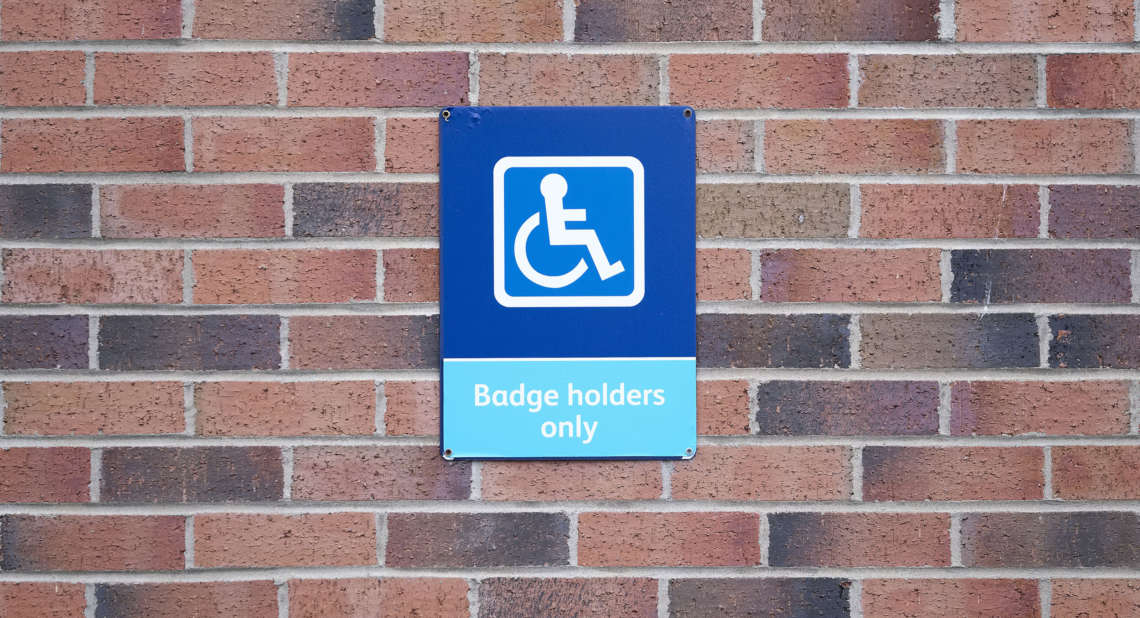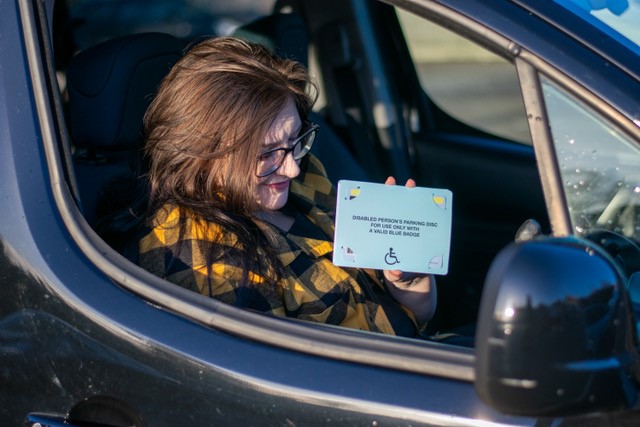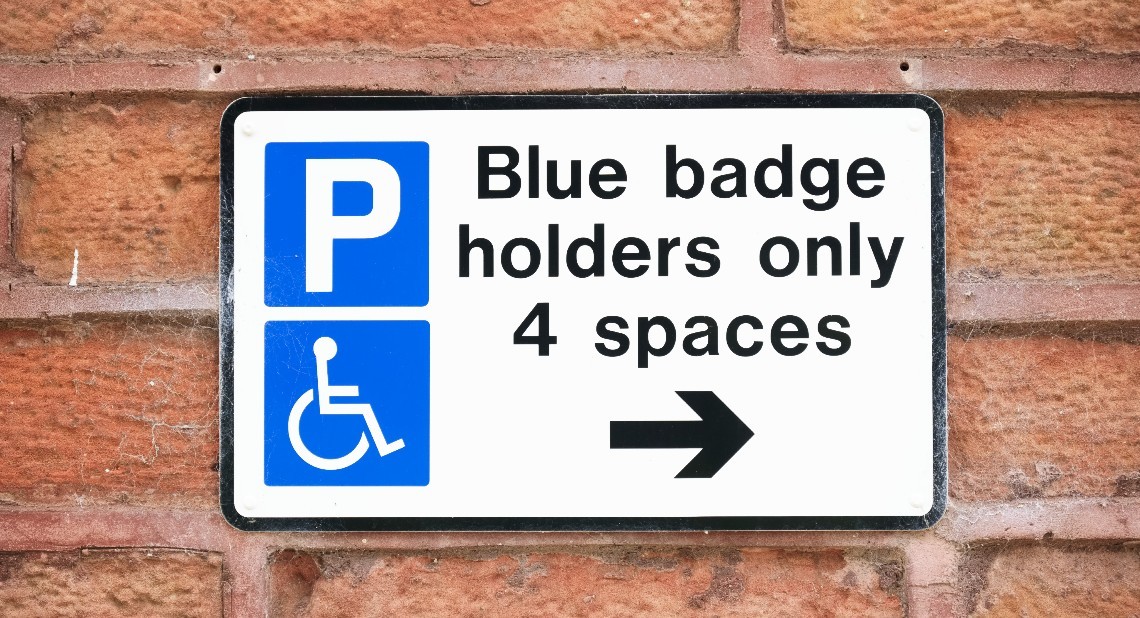Independent mobility consultant Helen Dolphin MBE has been heavily involved in reforming the Blue Badge scheme for the past ten years. In this article, she shares her personal experiences and provides some insight and advice about Blue Badges.
Through my role on the Disabled Person’s Transport Advisory Committee (DPTAC), I worked with the government on the 2011 reforms when a national database of Blue Badge holders was introduced. More recently, I’ve also been involved in the work on expanding the Blue Badge eligibility to accommodate more people with non-visible disabilities.
Although I now like to consider myself an expert on the Blue Badge scheme, this certainly hasn’t always been the case. I remember very soon after getting my first Orange Badge in 1998 (they changed to European style Blue in April 2000) that I got my first Penalty Charge Notice (PCN) for parking on a double yellow line.
The problem was, I was parking in Westminster where you are not allowed to park on yellow lines. It was obviously a common misunderstanding, as an apology to Westminster Council ensured my PCN was revoked. However, this was a lesson learnt and I took the time to read the information that came with my badge, explaining where I could and could not park. I’d like to say this was my first and last PCN, but sadly it wasn’t.
Still in the early days of having a Blue Badge, I parked in an off-street pay and display car park. I wrongly assumed that like on-street parking, it was free for Blue Badge holders. On returning to my car I saw the bright yellow ticket slapped on my windscreen and realised I’d made a mistake.
I always recommend appealing a ticket, especially when it’s a genuine mistake, and fortunately again I was let off with a warning. Although pay and display machines can be difficult for some Blue Badge holders to use, myself included, there is often the option of pay by text or pay by phone, which has made the process considerably easier. It completely depends on the car park whether Blue Badge holders have to pay so always check the signs when you park your car.
Speaking to other Blue Badge holders, there is often some confusion over knowing if a road is a public road where you can use a Blue Badge to park on-street, or whether it is a private road, where you can’t. For example, although the double yellow lines around a hospital may look like the perfect parking space for a Blue Badge holder, this is generally private land and so you cannot park here without the risk of getting a PCN. This is the same for roads within Universities and some other large sites. If you are in any doubt, it is always best to check, or find an actual marked out parking space instead.
In England and Wales, all Blue Badges are issued with a time clock. This is because there is a three-hour limit in these countries for parking on double yellow lines. There are also some specified disabled bays where parking has a time limit so you must always set the clock to show your time of arrival. The time clocks used to be made of flimsy card and it wasn’t long before I’d pulled the tab off rendering mine useless. I hadn’t thought much of it until I received yet another PCN for not displaying the correct time.
A tip I was given by another Blue Badge holder was to put the date in your diary when you need to renew your Blue Badge, as most local authorities don’t send out a reminder. I dutifully did this 6 weeks before my badge expired and recently applied for a renewal – the only issue I had was the automated reply I received from my council stated it would take six to 12 weeks to get my Blue Badge. So, although putting a reminder in your diary is a great idea, check timescales with your local authority and make sure it’s long enough in advance to accommodate this.
Related articles
Qualifying for a Blue Badge with Personal Independence Payment (PIP)
How to access disabled parking concessions across the UK
Toll road and congestion scheme charges across the UK
![]()







